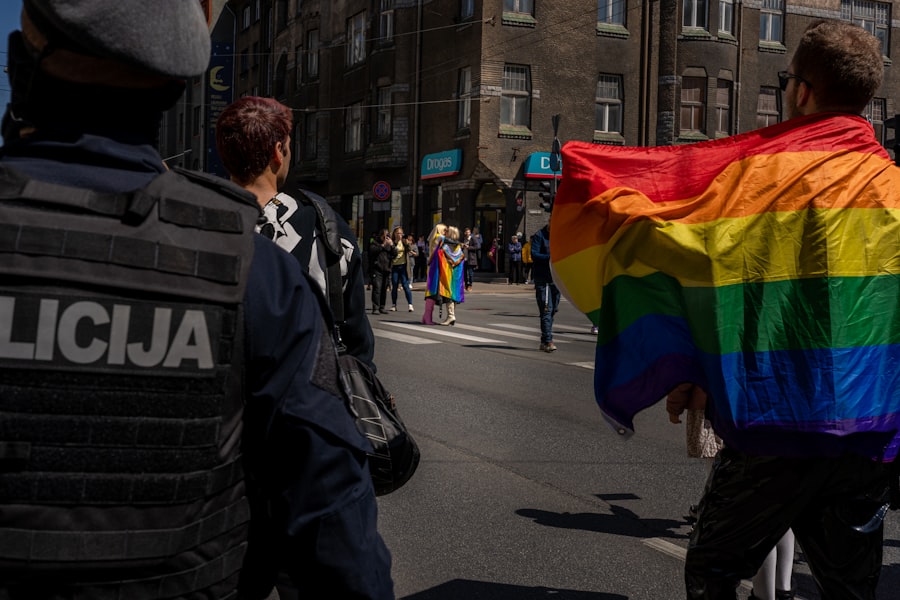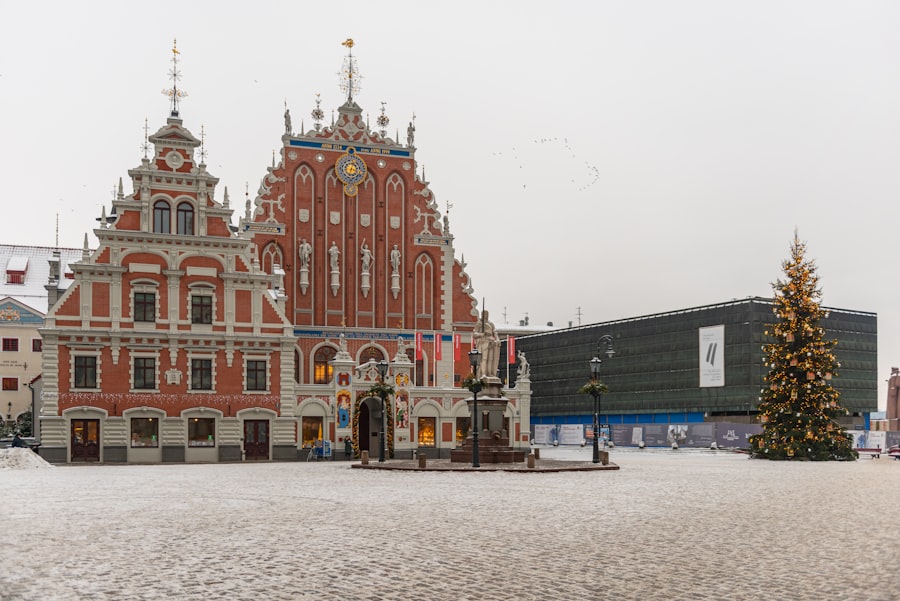
Latvia, a small yet captivating country nestled in the Baltic region of Northern Europe, boasts a rich tapestry of history, culture, and natural beauty. Bordered by Estonia to the north, Lithuania to the south, Russia to the east, and the Baltic Sea to the west, Latvia is a land of diverse landscapes, from sandy beaches to dense forests and picturesque lakes. The capital city, Riga, is renowned for its stunning architecture, vibrant arts scene, and historical significance.
With a population of approximately 1.9 million people, Latvia is a melting pot of influences, reflecting its complex past and the resilience of its people. The country’s strategic location has made it a crossroads of various cultures and civilizations throughout history. From the ancient Livonian tribes to the influence of the Hanseatic League, and later the rule of various empires, Latvia’s history is marked by periods of both prosperity and struggle.
Today, Latvia stands as an independent nation, having regained its sovereignty in 1990 after decades of Soviet occupation. This independence has allowed for a revival of national identity and cultural heritage, making Latvia an intriguing destination for travelers seeking to explore its unique blend of old and new.
Key Takeaways
- Latvia is a small country in the Baltic region of Northern Europe, known for its rich history and diverse culture.
- Latvia has a long and complex history, with influences from various neighboring countries and empires, resulting in a unique blend of traditions and customs.
- Riga, the capital city of Latvia, is a must-visit destination with its charming old town, Art Nouveau architecture, and vibrant cultural scene.
- Latvia is home to stunning natural wonders such as the Gauja National Park, the sandy beaches of Jurmala, and the picturesque Latvian countryside.
- Unique sights and landmarks in Latvia include the medieval Turaida Castle, the Rundale Palace, and the ethnographic open-air museum of Latvian rural life.
- When traveling in Latvia, it’s important to try the local cuisine, explore the countryside, and take part in traditional festivals to fully experience the country’s culture.
Historical and Cultural Facts about Latvia
Latvia’s history is a complex narrative that intertwines with the broader historical developments in the Baltic region. The earliest inhabitants of Latvia were the Finno-Ugric tribes, who settled in the area thousands of years ago. The arrival of German crusaders in the 12th century marked a significant turning point, as they established control over the region and introduced Christianity.
This period saw the founding of cities such as Riga in 1201, which became a vital trading hub within the Hanseatic League. The architectural remnants from this era can still be seen today, particularly in Riga’s Old Town, which is a UNESCO World Heritage site. The 16th and 17th centuries brought about significant changes as Latvia fell under Polish-Lithuanian control and later Swedish rule.
The Great Northern War in the early 18th century led to Russian dominance over Latvia, which continued for more than two centuries. The struggle for independence gained momentum in the early 20th century, culminating in Latvia declaring independence on November 18, 1918. However, this newfound freedom was short-lived as Latvia was occupied by Soviet forces during World War II, followed by Nazi Germany and then reoccupation by the Soviets.
The restoration of independence in 1990 marked a new chapter in Latvian history, allowing for a resurgence of cultural pride and national identity. Latvia’s cultural landscape is equally rich and diverse. The country is known for its vibrant folk traditions, which are celebrated through music, dance, and art.
The Latvian Song and Dance Festival, held every five years, is a testament to this cultural heritage, bringing together thousands of performers from across the nation. Traditional folk songs, known as “dainas,” often reflect themes of nature, love, and daily life, showcasing the deep connection Latvians have with their land. Additionally, Latvia’s literature has produced notable figures such as Rainis and Aspazija, whose works continue to resonate with contemporary audiences.
Must-Visit Places in Latvia

When exploring Latvia, one cannot overlook the capital city of Riga. Renowned for its stunning Art Nouveau architecture, Riga is home to over 800 buildings that exemplify this style. The Alberta iela street is particularly famous for its exquisite facades adorned with intricate details.
Visitors can also explore the historic Old Town, where cobblestone streets lead to landmarks such as St. Peter’s Church and the House of Blackheads. The vibrant atmosphere of Riga is further enhanced by its bustling markets, such as the Central Market housed in former zeppelin hangars, where one can sample local delicacies and purchase handmade crafts.
Beyond Riga, the charming town of Cēsis offers a glimpse into Latvia’s medieval past. The Cēsis Castle, dating back to the 13th century, stands as a symbol of the town’s historical significance. Visitors can wander through its well-preserved ruins and enjoy panoramic views from the castle tower.
The nearby Gauja National Park is another must-visit destination, known for its stunning landscapes and outdoor activities such as hiking and canoeing. The park is home to numerous castles and ancient sites that reflect Latvia’s rich history. Another noteworthy destination is Jūrmala, a seaside resort town located just a short drive from Riga.
Famous for its long sandy beaches and wooden architecture, Jūrmala attracts both locals and tourists seeking relaxation by the sea. The town’s promenade is lined with cafes and shops, making it an ideal spot for leisurely strolls. Additionally, visitors can indulge in wellness treatments at one of the many spas that offer traditional Latvian therapies.
Natural Wonders of Latvia
| Wonder | Location | Description |
|---|---|---|
| Gauja National Park | Vidzeme region | Largest national park in Latvia, known for its diverse flora and fauna |
| Cape Kolka | Kurzeme region | Where the waters of the Baltic Sea and the Gulf of Riga meet, creating a unique natural phenomenon |
| Veczemju Cliffs | Vidzeme region | Impressive limestone cliffs overlooking the Baltic Sea |
| Great Kemeri Bog | Zemgale region | One of the largest bogs in Latvia, home to diverse plant and animal species |
Latvia’s natural beauty is one of its most compelling features, characterized by lush forests, pristine lakes, and an extensive coastline along the Baltic Sea. One of the country’s most remarkable natural wonders is the Gauja River Valley, which meanders through Gauja National Park. This area is not only known for its breathtaking landscapes but also for its biodiversity.
The Kemeri National Park is another gem that showcases Latvia’s natural splendor. Located near Riga, this park features unique wetlands and diverse ecosystems that support a wide range of wildlife.
Visitors can explore well-marked trails that lead through marshes and forests while enjoying the tranquility of nature. The park is particularly famous for its therapeutic mud baths and mineral springs, which have been used for centuries for their healing properties.
The beach town of Liepāja is known for its vibrant cultural scene and beautiful sandy shores. Meanwhile, Cape Kolka marks the point where the Gulf of Riga meets the open sea, providing dramatic views and opportunities for birdwatching during migration seasons.
Unique Sights and Landmarks in Latvia
Latvia is dotted with unique sights and landmarks that reflect its rich history and cultural heritage. One such landmark is the Freedom Monument in Riga, which stands as a symbol of Latvian independence and national pride. Erected in 1935, this iconic structure features a woman holding three stars above her head, representing Latvia’s three historical regions: Kurzeme, Zemgale, and Vidzeme.
The monument serves as a gathering place for various national celebrations and events. Another fascinating site is the Rundāle Palace, often referred to as the “Versailles of Latvia.” This magnificent baroque palace was designed by architect Bartolomeo Rastrelli in the 18th century and features opulent interiors adorned with exquisite frescoes and gilded decorations. The surrounding gardens are equally impressive, showcasing formal landscaping that reflects French garden design principles.
The town of Kuldīga is renowned for its charming architecture and historical significance. It is home to the widest waterfall in Europe—Ventas Rumba—where visitors can witness the stunning sight of water cascading over rocks while enjoying a leisurely walk along the riverbank. Kuldīga’s well-preserved wooden buildings add to its quaint charm, making it a delightful destination for those interested in exploring Latvia’s architectural heritage.
Tips for Traveling in Latvia

Traveling in Latvia can be an enriching experience with proper planning and awareness of local customs. One essential tip for visitors is to familiarize themselves with public transportation options available in major cities like Riga. The public transport system includes buses, trams, and trolleybuses that are efficient and affordable.
Purchasing a travel card can save money for those planning to use public transport frequently. Language can be another consideration when traveling in Latvia; while Latvian is the official language, many Latvians speak English fluently, especially in urban areas. However, learning a few basic phrases in Latvian can enhance interactions with locals and show appreciation for their culture.
When it comes to dining out or enjoying local cuisine, visitors should not miss trying traditional dishes such as grey peas with speck or rye bread served with various toppings. Exploring local markets can also provide an authentic taste of Latvian culture through fresh produce and artisanal products. Lastly, travelers should be mindful of Latvia’s seasonal variations when planning their visit.
Summers are warm and ideal for outdoor activities along the coast or in national parks; however, winters can be quite cold with opportunities for winter sports like skiing or ice skating. Each season offers unique experiences that showcase different aspects of Latvian culture and nature. In summary, Latvia presents an array of historical richness intertwined with natural beauty that captivates visitors from around the globe.
From its vibrant cities steeped in history to serene landscapes waiting to be explored, Latvia offers an unforgettable journey into a lesser-known yet enchanting part of Europe.
If you’re interested in exploring more about unique travel destinations similar to Latvia, you might find the article on Georgia: Places to Visit and Things to See quite fascinating. This article provides an in-depth look at Georgia’s rich cultural heritage, stunning landscapes, and historic sites, much like the comprehensive insights you would find in a guide about Latvia. Whether you’re a history buff, nature lover, or just looking to explore new places, this article offers valuable information to help plan your next adventure.
FAQs
What are some interesting facts about Latvia?
– Latvia is one of the three Baltic states, along with Estonia and Lithuania.
– The official language of Latvia is Latvian.
– Latvia is known for its beautiful forests, lakes, and beaches.
– Riga, the capital city of Latvia, is famous for its well-preserved medieval old town.
What are some popular places to visit in Latvia?
– Riga: The capital city is known for its stunning architecture, vibrant nightlife, and rich history.
– Jurmala: A popular seaside resort town known for its sandy beaches and spa facilities.
– Gauja National Park: A beautiful national park with forests, rivers, and medieval castles.
– Cesis: A charming town with a well-preserved medieval castle and cobblestone streets.
What are some must-see sights in Latvia?
– Riga Old Town: A UNESCO World Heritage site with narrow cobblestone streets and medieval buildings.
– Rundale Palace: A stunning baroque palace with beautiful gardens, located in the countryside.
– Turaida Castle: A medieval castle with a museum and panoramic views of the Gauja River valley.
– Kemeri National Park: A nature reserve with trails, wooden boardwalks, and natural sulfur springs.



